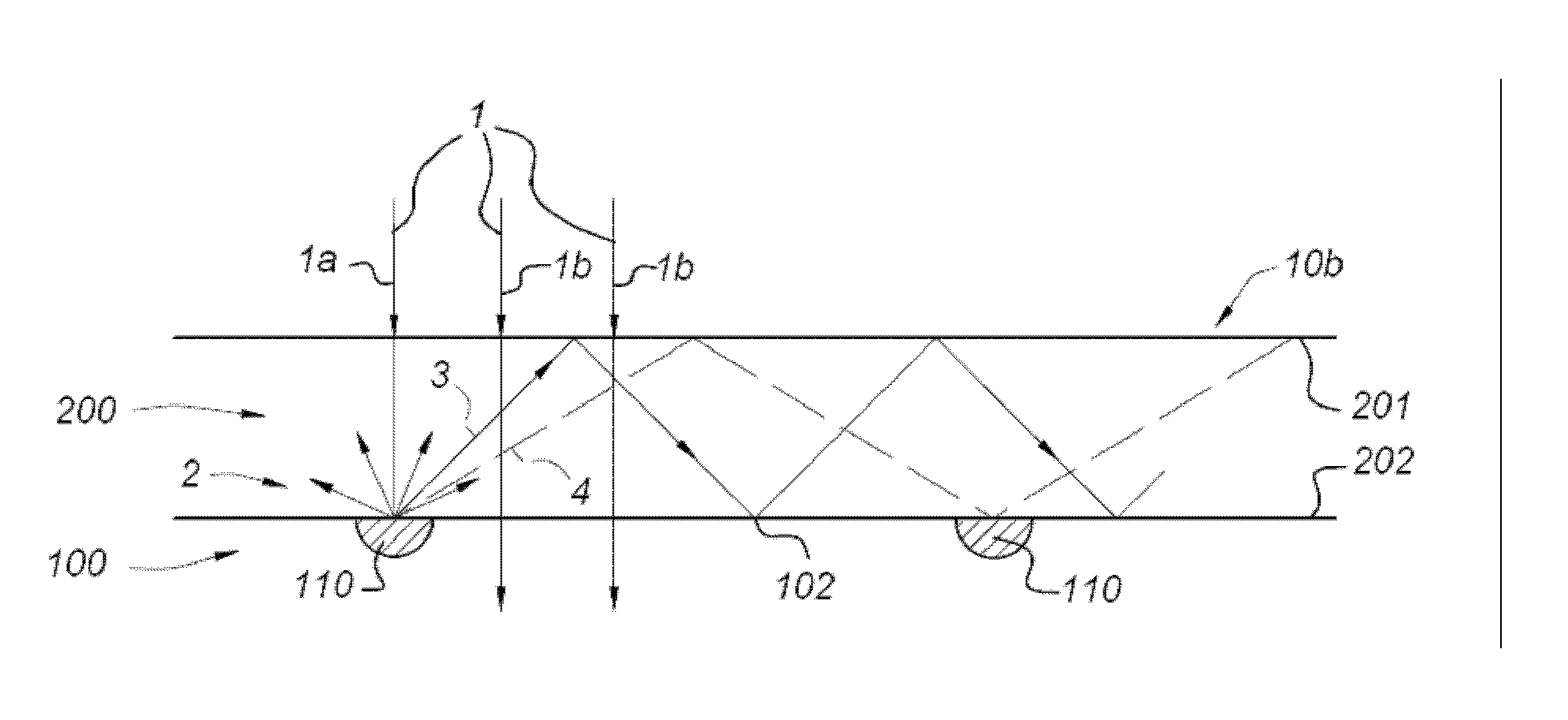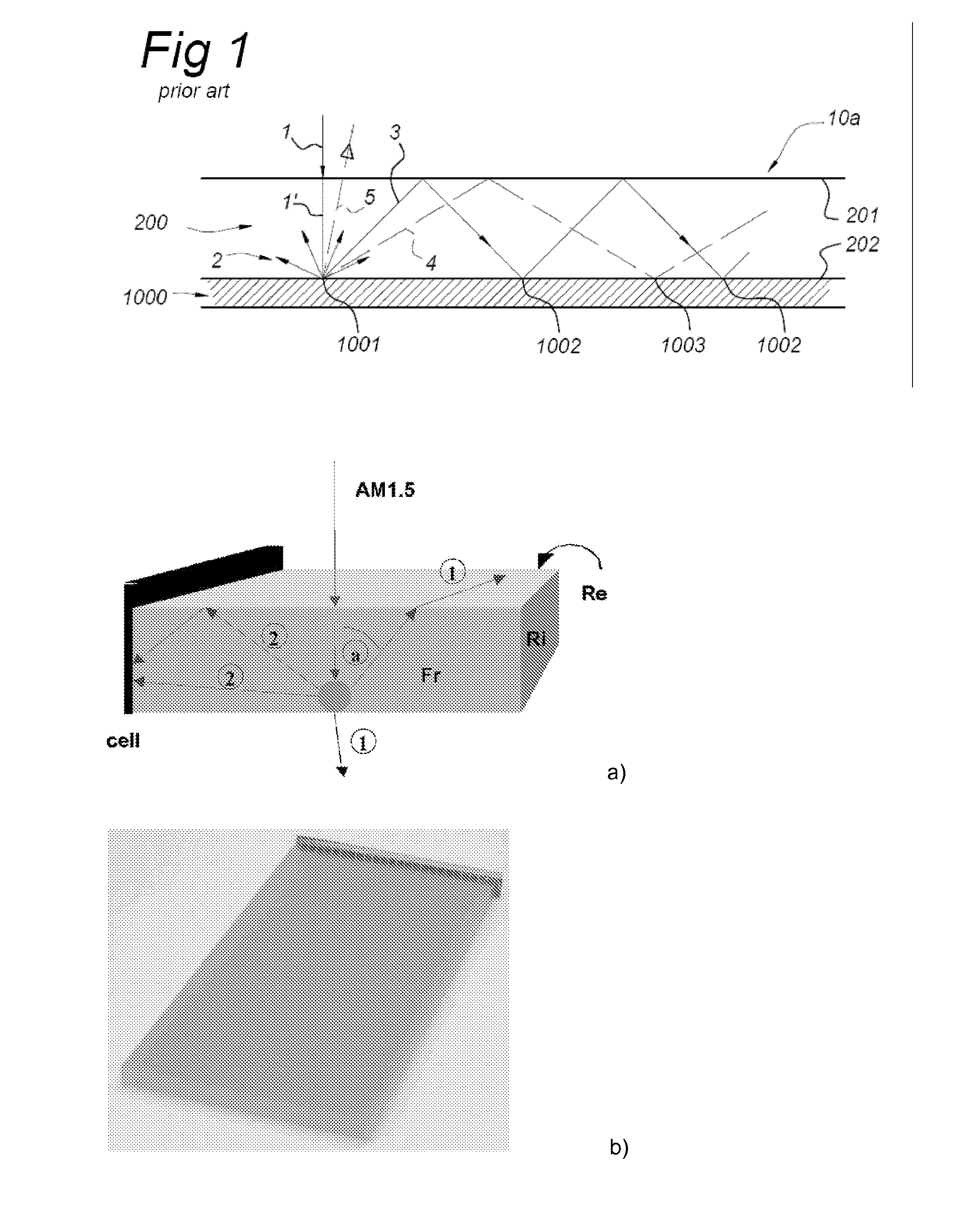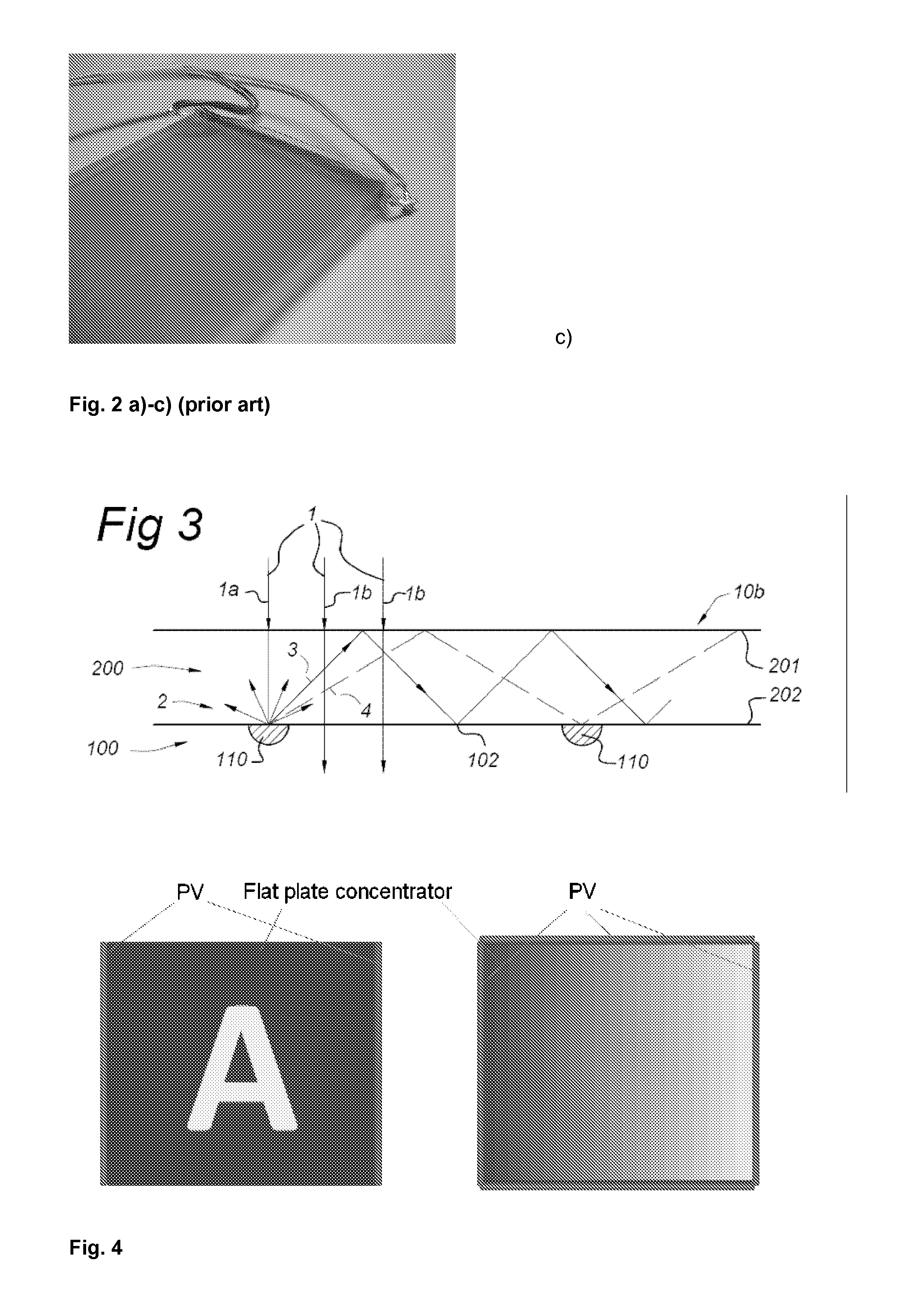Luminescent optical device and solar cell system with such luminescent optical device
a luminescent optical and solar cell technology, applied in the direction of instruments, lighting and heating apparatus, planar/plate-like light guides, etc., can solve the problems of high investment cost, high maintenance cost, and high cost of solar energy generation in photovoltaic systems, so as to reduce the size of the light receiving surface and reduce the cost of the photovoltaic cell. , the effect of efficient emission of ligh
- Summary
- Abstract
- Description
- Claims
- Application Information
AI Technical Summary
Benefits of technology
Problems solved by technology
Method used
Image
Examples
first embodiment
[0147]FIG. 17 schematically shows a luminescent optical device 10 according to the invention according to a The lens structure 300 has a plurality of lenses 310, which extend along a long axis perpendicular to a short axis, the lenses 310 have a generally line-shaped focus on respective line-shaped luminescent domains 110 extending parallel to the ling axis of the respective lens 310. These lenses may further be referred to as cylindrical lenses 310L. The cylindrical lenses 310L are arranged side-by-side in a one-dimensional array. Each cylindrical lens has an aspherical cross section over the short axis of the lens 310L. The cross section is substantially constant over the long axis of the lenses 310L. The luminescent optical device 10 is preferably oriented during use with the long axis of the cylindrical lenses 310L arranged substantially east-west, and its short axis north-south, thereby focusing sun light onto the luminescent domains 310 over a large section of the sun's altit...
second embodiment
[0148]FIG. 18 schematically shows a luminescent optical device 10 according to the invention according to a The lens structure 300 has a plurality of lenses 310, which have a substantially circular shape (when observed in a top view), the lenses 310 have a generally dot-shaped focus on respective dot-shaped luminescent domains 110. These lenses may further be referred to as circular lenses 310C. The circular lenses 310C are arranged side-by-side in a two-dimensional array. In the example shown, the two-dimensional array is a square grid, but the two-dimensional array may alternatively be e.g. a hexagonal array wherein the circular lenses 310C are arranged in a closed-packed arrangement. The luminescent domains 310 are arranged in a corresponding two-dimensional array. Each circular lens 310C has an aspherical cross section over its diameter in any direction, which is designed to provide a large angular acceptance range over a large section of the sun's altitude trajectory. The angu...
PUM
| Property | Measurement | Unit |
|---|---|---|
| Fraction | aaaaa | aaaaa |
| Angle | aaaaa | aaaaa |
| Fraction | aaaaa | aaaaa |
Abstract
Description
Claims
Application Information
 Login to View More
Login to View More - R&D
- Intellectual Property
- Life Sciences
- Materials
- Tech Scout
- Unparalleled Data Quality
- Higher Quality Content
- 60% Fewer Hallucinations
Browse by: Latest US Patents, China's latest patents, Technical Efficacy Thesaurus, Application Domain, Technology Topic, Popular Technical Reports.
© 2025 PatSnap. All rights reserved.Legal|Privacy policy|Modern Slavery Act Transparency Statement|Sitemap|About US| Contact US: help@patsnap.com



